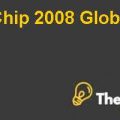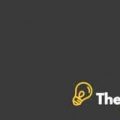Introduction
B&G Foods is a publicly held grocery-brand conglomerate that “offers retailers and consumers alike, high-quality, innovative and competitively priced shelf-stable grocery and household brands across many different categories and classes of trade in the United States, Canada and abroad” (V.E. Maskal, personal communication, April 5, 2018). B&G’s annual sales totaled $848 million for Fiscal Year 2016, and a portion of those sales is directly attributable to the company’s decision to branch further into the snack aisle with the acquisition of Pirate’s Booty (B&G Foods, 2016).
Pirate’s Booty was purchased by B&G Foods in the second quarter of 2013 for $195 million. Since the integration of Pirate’s Booty domestically, B&G has reported net sales of $80 to $90 million annually and an adjusted EBITDA of $18 to $20 million with sales growth of more than 20 percent year-over-year (B&G Foods, 2016). Pirate’s Booty has been in the US since 1987 and is known for its famous, all-natural rice and corn snack flavored with white cheddar cheese (Benoit, 2013).
Strategic Positioning
Nowadays the consumer are becoming health conscious and well informed in the South Africa. Pirate’s booty is entering into a new market i.e. South Africa. How pirate’s booty position itself in order to create sustainable competitive advantage in the well-established snack food market of South Africa. A company’s relative position within its industry matters for performance. Strategic positioning reflects choices a company makes about the kind of value it will create and how that value will be created differently than rivals. What will be the best move in order to remain in the industry and to attain high market share in the snack food industry. We will perform external analysis in order to identify the market trend and internal analysis of the resources available that will assist in gaining competitive edge.
Pirate’s Booty – A Tasty Snack Voyage into South Africa Harvard Case Solution & Analysis
External Analysis:
The overall population of South Africa spends USD 1.05 billion per year on snacks with 19.67 percent of that amount focused on the towns of Cape Town, Johannesburg, and Durban (Ferdman, 2014). To further assess the detail behind these numbers, The Booty Crew chose to look at the snacking industry using Michael Porter’s Five Forces analysis.
1) The threat of new entrants is Low. For a firm to compete within the South African snack food industry, the company must “pay to play,” meaning that an exorbitant amount of capital is needed for entrance into and competition within this market/industry which creates a deterrence. This can further be entailed by the reigning brands such as Simba Group (Frito Lay) and Willard’s and Poco foods who have most of the market share in the current South African market. Simba holds 65% share, while the rest holds around 15-20% of the total market (USDA, 2006)
2) The threat of substitutes is moderate. Even though the savory snacks built its position by offering diverse product so that customer are less likely to find the products that need their need. But there are substitute potato crisp available in the market. The quality of the substitute product is somewhat equal to the quality of industry product...............
This is just a sample partical work. Please place the order on the website to get your own originally done case solution.









